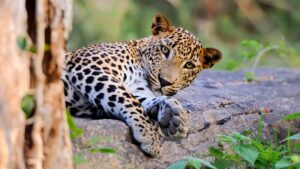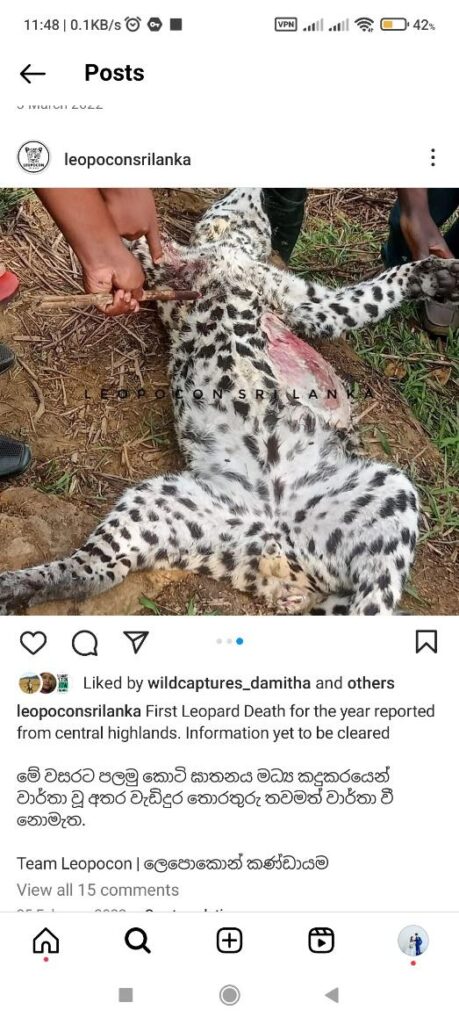Physical Address
23,24,25 & 26, 2nd Floor, Software Technology Park India, Opp: Garware Stadium,MIDC, Chikalthana, Aurangabad, Maharashtra – 431001 India
Physical Address
23,24,25 & 26, 2nd Floor, Software Technology Park India, Opp: Garware Stadium,MIDC, Chikalthana, Aurangabad, Maharashtra – 431001 India

This is an era where climate change affects our lives and animals’ daily lives. Humans can express their problems, but animals cannot, since how they say their difficulties. Only one way we can see that they are in danger of environmental issues is when they die, or their population decreases. We hope to talk about an animal that plays a precious ecological role.
Introduction
The leopards are the smallest member of the genus Panthera, which includes the Lion, Tiger and Jaguar. The Leopard (Panthera pardus, Linnaeus, 1758) is the most secretive and intangible of the large carnivores but is also affected by climate change. More can be read here
Apart from the Panthera pardus, the genetic (DNA) analysis has recognised several subspecies worldwide and Sri Lanka was also recognised as an endemic subspecies holding country. It was named as Panthera Pardus Kotiya by PEP deraniyagala. And later, a scientific thesis by Dr Sriyani Miththapala revealed the existence of this endemic subspecies on August 1st. Apart from the international tiger celebration, a second day of celebration has been designated to raise awareness about this endemic leopard subspecies. Then, continuous efforts by the Sri Lanka Wildlife and Nature Conservation Society (WNPS) with the support of the Department of Wildlife Conservation (DWC) have announced August 1st as National leopard day in 2021. By the way, IUCN has Classified the Sri Lankan leopard as “Endangered” due to the population declining by numerous threats, including poaching, deforestation and human-leopard conflicts.
Can leopards be found all around the country?
Of course, the Sri Lankan leopard is the country’s top predator. “The Leopard Project”, run by The Wilderness and Wildlife Conservation Trust, indicate that they are still distributed throughout the island inside and outside protected areas.

Leopards can see in various habitats, including dry evergreen monsoon forests, arid scrub jungles, low and upper highland forests, rainforests, and wet zone intermediate forests. More can be read here
However, they are facing numerous challenges in their living areas due to climate change. Let’s consider how climate change impacts on
The lives of leopards in Sri Lanka.
Recent droughts cause the country’s largest leopard population at risk
climate change can significantly affect Sri Lankan leopards (Panthera pardus kotiya) and their habitat. Prolonged droughts, which we are experiencing today, are also a significant issue for these animals. Sri Lanka’s main leopard population can be seen in national parks. A recent study has shown that Yala National Park has one of the world’s highest recorded densities of leopards, although this animal is still considered endangered. Today’s news reported that excessive heat and lack of water in the Yala national park also oilpatch national park are pressuring many animals, including leopards. Leopards must travel long distances to find drinking water since lack of water is the main problem that leopards face due to climate change.
Human-leopard Conflict
As climate change affects the availability of natural resources, leopards may venture into human settlements in search of food or water. This can increase human-leopard encounters, leading to conflicts and, in some cases, retaliation by communities against the leopards.
Since 2010, over 90 leopards have been killed by people in Sri Lanka.
Here are some recent leopard deaths reported by Leopocon, a nonprofit environmental conservation organisation that fights to conserve leopards. These leopard deaths happen due to human-leopard conflict and inhumane responses of people.




Disruptions in Reproduction
Extreme weather events and resource availability changes can impact leopards’ reproductive success. Little is known about the reproductive behaviour of Sri Lankan leopards. In general, leopards have a polygynandrous (promiscuous) mating system, where both males and females mate with several mates. Young leopards start breeding when they are between 2 and 3 years old. Lack of suitable habitat and reduced prey availability can lead to decreased reproduction rates and lower cub survival. Leopards breed throughout the year. The gestation lasts 90-105 days, yielding from 2 to 4 cubs. That’s why an ecosystem should be in good condition to maintain those cubs properly. But climate change is hindering the maintenance of such a stable ecosystem.
Changes in Habitat
Climate change can alter the distribution of vegetation and habitats in Sri Lanka. Shifts in temperature and precipitation patterns may lead to changes in the availability of suitable prey, water sources, and vegetation cover, affecting the leopards’ ability to find food and shelter.
Sri Lankan leopards are carnivores. Like most cats, they are pragmatic in their choice of diet, which can include small mammals, birds, reptiles, and larger animals. Sri Lankan axis deer make up the majority of their diet in the dry zone. However, vegetation distribution changes lead deer and other species to shift to different places, affecting leopards.
Climate change can disrupt ecosystems and impact the abundance and distribution of prey species that leopards depend on. Changes in prey availability can affect the leopards’ survival, reproduction, and overall population dynamics.
Deforestation reduces the gene flow of leopards.
When deforestation occurs, much of the carbon stored by trees is released back into the atmosphere as carbon dioxide, contributing to climate change. On the other hand, forests are rapidly being depleted in Sri Lanka. This is affecting the lives of leopards by forcing them to move to smaller, less suitable locations. Often, without the support of the forest ecosystem, these leopards do not have the resources to survive and flourish, and as a result, they become endangered. Also, deforestation leads to fragmenting leopards’ habitats and isolating leopard populations, reducing gene flow and genetic diversity.
In a nutshell
Sri Lankan leopards are the main predators of the wild but are also affected by climate change. Prolonged droughts, temperature rise, Disruptions in Reproduction and habitat loss are the main challenges they face due to climate change. Climate change has also impeded the human-tiger conflict, and conservation efforts are essential to protect and preserve this unique subspecies and its natural habitat.
It is crucial to implement effective conservation measures to mitigate these impacts and ensure the long-term survival of Sri Lankan leopards. Such as creating protected areas, restoring and preserving critical habitats, implementing climate change adaptation strategies, promoting sustainable land-use practices, and raising awareness.
If you have any queries or come across suspicious content related to climate change or the environment and want us to verify them for you, then send them to us on our WhatsApp hotline: +917045366366